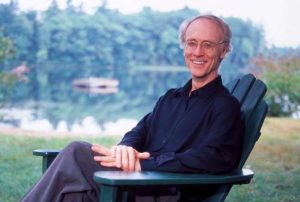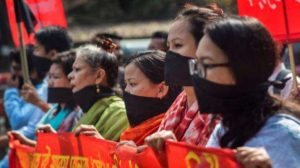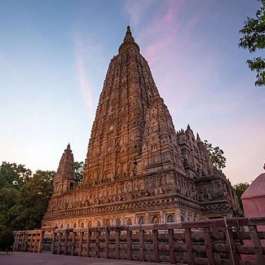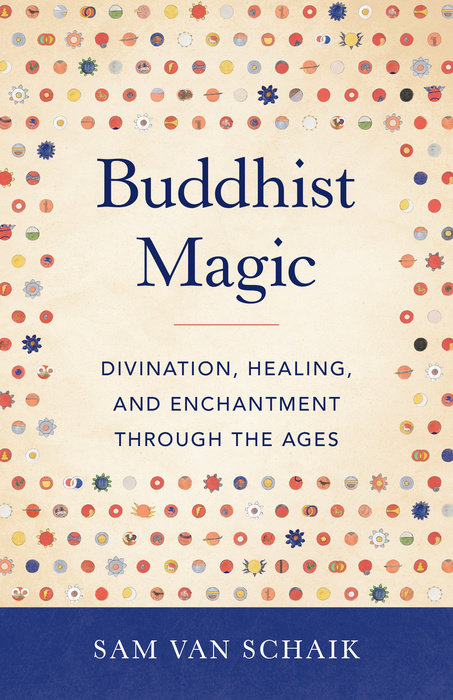
Sam van Schaik is head of the Endangered Archives Programme (EAP) at the British Library. He participated in a panel at February’s conference on “Unlocking Buddhist Written Heritage” at the British Library. This year he is publishing a new book with Shambhala Publications, titled Buddhist Magic: Divination, Healing, and Enchantment Through the Ages (2020).
Buddhistdoor Global: Can you elaborate on what you spoke about at the British Library conference?
Sam van Schaik: I spoke about my recent work on the role of magic in Buddhism, from a thousand-year-old book of spells from Dunhuang to the collections on modern practitioners documented under the Endangered Archives Programme. The book of spells is a small manuscript that contains a vast number of spells. I gave a few examples, including an exorcism involving an effigy of a cat, love magic for breaking up lovers or getting them to make up after a quarrel, and a divination practice involving gazing into a mirror. This last one is especially interesting to me. It actually requires the monk to have a young child gaze into the mirror, and then question the child about what he or she sees there. Similar rituals are found in other Buddhist cultures, but also way beyond the Buddhist world, as far away as medieval Europe and northern Africa.
Lest people think this is something specific to Tibet or to tantric Buddhism, I then talked about how magical practices like this go back to earlier Buddhist manuscripts and scriptures. For example, there is a protective practice invoking the nagas (dragons or serpent spirits) found among the earliest surviving Buddhist manuscripts from the Gandhara region. Then there’s the Bower manuscript found in the Taklamakan desert that seems to have belonged to a monk practicing medicine, divination, and protection through mantras. I also pointed out that the use of recitations to invoke the help of supernatural beings for protection goes back as early as we can tell in Buddhism, and certainly pre-dates the emergence of the Mahayana.
I also talked about the manuscripts found in Gilgit, Kashmir. These are Sanskrit manuscripts dating from the sixth and seventh centuries that were found in the ruins of an ancient monks’ residence. The manuscripts contain many spells and scriptures offering protection. As the scholar Oskar von Hinüber has shown, some of these contain the names of local people, and others have gaps where the names could be filled in later. So, as von Hinüber has said, the monks here seem to have provided magico-medical services to the local community. There are good reasons to think this was common in Buddhist communities.
In the second part of my talk I looked at three projects sponsored by the Endangered Archives Programme. The first was carried out by the Nepalese scholar Shanker Thapa, and documented the manuscripts of the Buddhist practitioners known as Vajracharyas in the Kathmandu Valley. The Vajracharyas are not monks but married tantric teachers who pass their lineage down through the family. They practice Vajrayana empowerment and meditation, and offer other services such as protection and rainmaking. Some of their practices have been described as “Hindu,” but if one understands the history of Buddhist magic, one can see that these are usually quite mainstream Buddhist practices. Another EAP project, carried out by Valentina Punzi, looks at Tibetan ngakpas, or mantra practitioners, in Amdo [Qinghai, China]. The manuscript collections of these ngakpas show how they combine Buddhist teaching and practice with offering services such as exorcism.
So I ended my talk by saying that “magic” is a useful category to understand an often neglected aspect of Buddhism, but it has almost always been thoroughly integrated with other aspects of Buddhist practice.
BDG: Let’s get into the book itself. If there is a certain discomfort with discussing “magic” in modern Buddhist communities, how would you describe magic’s “legitimate” role in Buddhist traditions?
SVS: Whether we consider them legitimate or not, the practices I discuss in the book under the heading “magic” have been there in Buddhism from very early on. I think the discomfort comes from how we have tried to repackage Buddhism for the modern world, as more of a philosophy than a religion, as rational rather than superstitious. This is a process that got underway in the 19th century, as Europeans appropriated Buddhist ideas, and as some Asian Buddhists, particularly in the Theravada and Zen traditions, created new forms of Buddhism that better suited the modern, scientific world view.
Yet what could be more legitimate than practices that are taught in Buddhist scriptures, in the words attributed to the Buddha himself? Practices for harnessing the power of supernatural beings for curing snakebite, protecting a pregnant woman, and the like, are right there in the sutras. One of the most popular of them all, the Lotus Sutra, has a dharani chapter where spells are taught. So I think as modern Buddhists we need to look our own tradition in the face and get to know it a bit better.
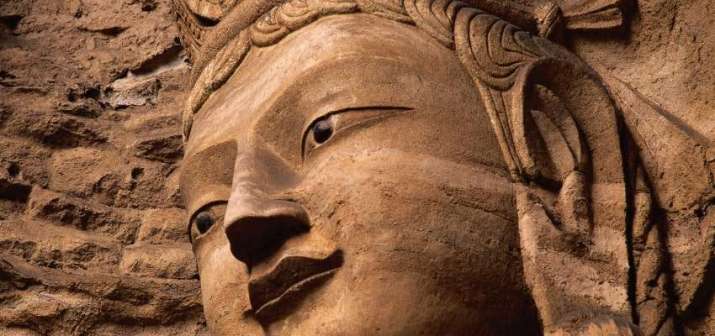
BDG: Scholars are broadly aware of the magical aspects of Buddhism down the ages, from the Buddha’s supramundane powers, to the thaumaturgy of Tang dynasty masters, to the tantric blessings and curses of late Indian Buddhism. What makes the grimoire of spells and rituals from Dunhuang (the focus of your book) unique? Is it from a particular school of Tibetan Buddhist magic, or is it some kind of compendium summarizing magic from different Vehicles?
SVS: I see the book of spells from Dunhuang as a point of connection. From when it was written, at the end of the first millennium CE, it allows us to explore the roots of Buddhist magic going back over a thousand years. And it also allows us to look at how Buddhist magic has developed through to modern times. What I find particularly interesting about this grimoire are the choices made by the person who put it together. There are spells here for medical emergencies, for divination, for rainmaking, for aggressive magic, and for the really magical activities of flying, clairvoyance, and going invisible. On the other hand, there’s nothing for death—no prayers or funerary practices. And there are no teachings on karma, rebirth, and so on.
So the Dunhuang grimoire really is a collection focused on the needs of this life. It’s a small and not very beautiful booklet, obviously made for use rather than beauty, so we can be fairly confident in saying it was used by someone, probably a monk, who offered these services to the local community. In fact, somebody did write their name on the front! It’s a version of the Sanskrit name Prajnaprabha: “Light of Insight.”
Now, as I said earlier, I don’t mean that this monk specialized in magic to the detriment of other Buddhist activities. But the Dunhuang manuscript does show that these practices dedicated to the needs of this life were considered to belong together. That’s one of the reasons I feel we can justifiably talk about a genre of Buddhist magic.
BDG: Does the book of spells, or any other source you’ve encountered, try to reconcile the idea of magic with karma and dependent causation (since magic seems to be an active attempt to influence the natural world beyond causality)? Surely Buddhist masters and magicians would have been aware of the doctrinal priority given to the latter?
SVS: Actually, this is a bigger question for Buddhism in general, in my opinion. The concept of transferring merit is fundamental in all Buddhist practice traditions, and seems to go back to the very earliest times. Yet it is not an easy matter to reconcile it with the idea of karma as personal responsibility. If we generate merit through our activities, how can this be transferred to another person who has not carried out similar positive actions? Yet this is part of almost all Buddhist liturgies. So if you ask this question about Buddhist magic, I’d say it is part of a wider issue about how karma is considered to work in Buddhist practices.
I have seen discussions of this issue in Tibetan Buddhism, for example in the context of practices to extend the lifespan of oneself or one’s teacher. It is said that the practices can be effective, but if there are other strong karmic reasons for dying early, there is nothing to be done about that.
We can also look at this from another point of view. Are we ignoring the principles of karma and dependent origination when we go to see a doctor and take the pills that they prescribe? Because Buddhist magical practices are also mostly prescriptions for specific ailments or issues. Sometimes we could put them in the category of medicine, as when the instructions are to prepare pastes or pills. In other cases a sickness might be addressed by making a spirit trap or destroying an effigy, but this is still a form of treatment.
BDG: Your book makes the case that magic needs to be done justice as a realm of study in Buddhism. Yet Buddhism, especially in its reform period in Asia (particularly in China), has striven to rebut charges of superstition. Even today, Buddhism can be a bit sensitive to words such as “folklore” or “witchcraft,” or even commonly used items among Asian Buddhists, like charms and talismans. All these words have relations to magic. Can Buddhism be “magical” without being superstitious?
SVS: I don’t want to argue that this kind of practice should be front and center in Buddhism as it develops in the contemporary world. But I think there are some lessons to be learned about how much Buddhists have always been “in the world,” so to speak. They have not confined themselves to meditation and philosophy. I argue in the book that providing practical services to local communities might have been crucial to the spread and survival of Buddhism across Asia. And let’s not forget that magical practices, amulets, and talismans are still very important to Buddhists in Thailand, Japan, and indeed China, and across the Asian Buddhist landscape. I think that needs to be respected rather than being labelled “superstition” and dismissed as not “real” Buddhism.
Something I learned in writing this book is how much Buddhist magical practices have in common with other traditions in different cultures across the world: Babylonian, Jewish, Greco-Roman, medieval European and more. Sometimes a practice seems to have been so potent that it spread across barriers of language and culture. Other times, it’s more that we humans all have similar needs in our daily lives, and practices evolve to deal with these in similar ways. So as I say at the end of the book, magic is our shared heritage.






